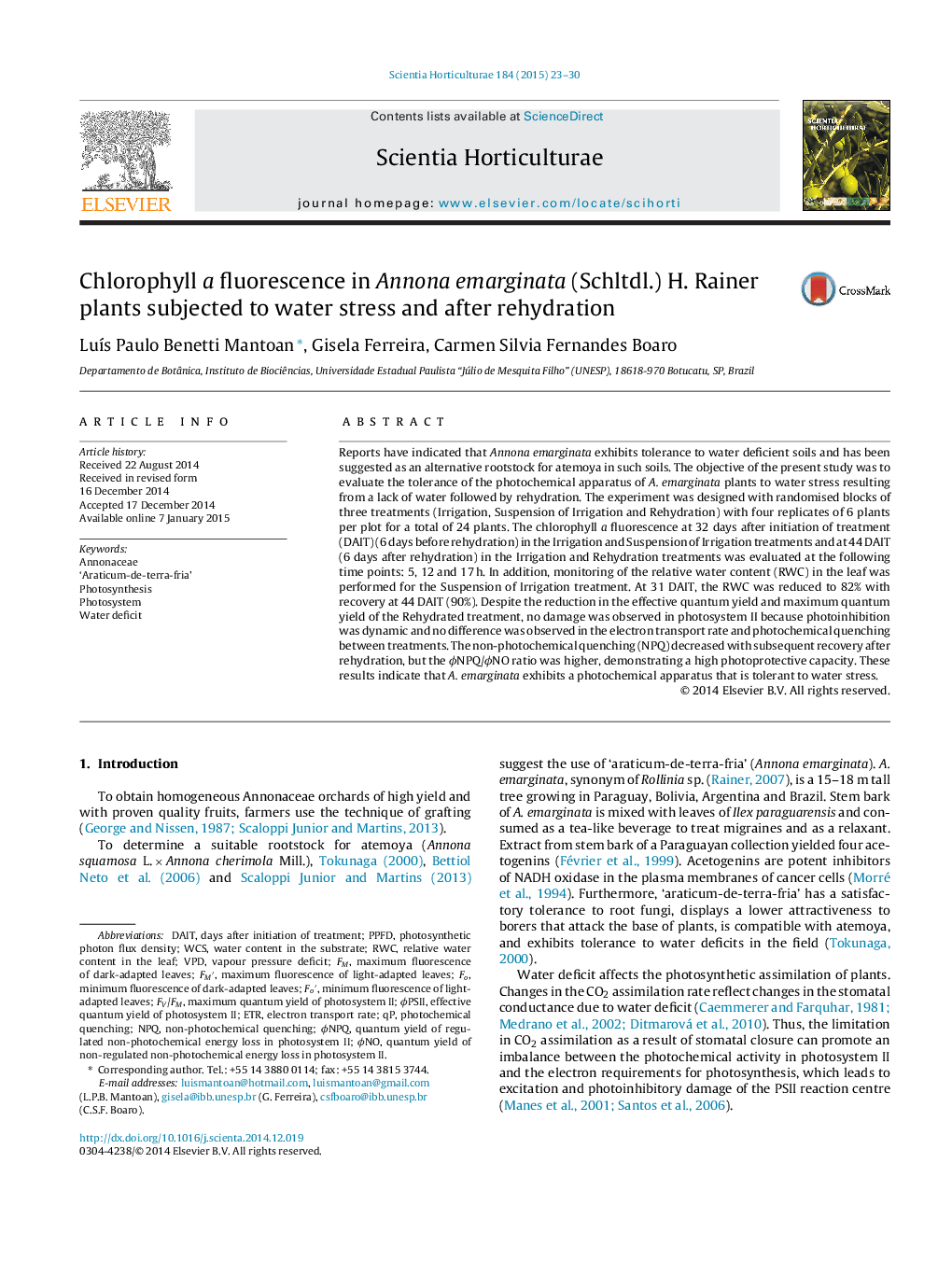| Article ID | Journal | Published Year | Pages | File Type |
|---|---|---|---|---|
| 4566462 | Scientia Horticulturae | 2015 | 8 Pages |
•Annona emarginata exhibits a tolerant photochemical apparatus to water stress.•ɸNPQ/ɸNO ratio indicates photoprotection for all treatments.•All of the treatments display dynamic photoinhibition.
Reports have indicated that Annona emarginata exhibits tolerance to water deficient soils and has been suggested as an alternative rootstock for atemoya in such soils. The objective of the present study was to evaluate the tolerance of the photochemical apparatus of A. emarginata plants to water stress resulting from a lack of water followed by rehydration. The experiment was designed with randomised blocks of three treatments (Irrigation, Suspension of Irrigation and Rehydration) with four replicates of 6 plants per plot for a total of 24 plants. The chlorophyll a fluorescence at 32 days after initiation of treatment (DAIT) (6 days before rehydration) in the Irrigation and Suspension of Irrigation treatments and at 44 DAIT (6 days after rehydration) in the Irrigation and Rehydration treatments was evaluated at the following time points: 5, 12 and 17 h. In addition, monitoring of the relative water content (RWC) in the leaf was performed for the Suspension of Irrigation treatment. At 31 DAIT, the RWC was reduced to 82% with recovery at 44 DAIT (90%). Despite the reduction in the effective quantum yield and maximum quantum yield of the Rehydrated treatment, no damage was observed in photosystem II because photoinhibition was dynamic and no difference was observed in the electron transport rate and photochemical quenching between treatments. The non-photochemical quenching (NPQ) decreased with subsequent recovery after rehydration, but the ɸNPQ/ɸNO ratio was higher, demonstrating a high photoprotective capacity. These results indicate that A. emarginata exhibits a photochemical apparatus that is tolerant to water stress.
